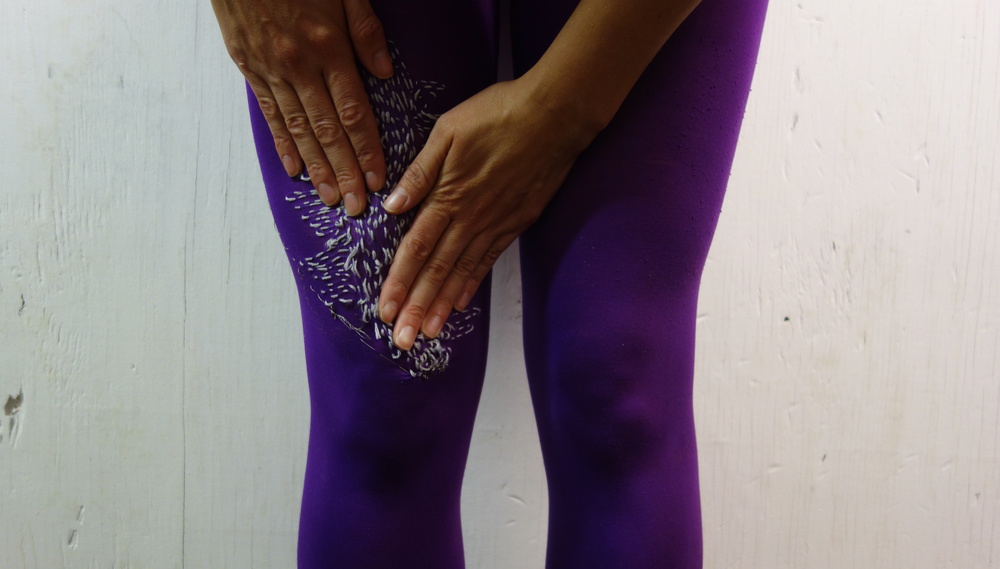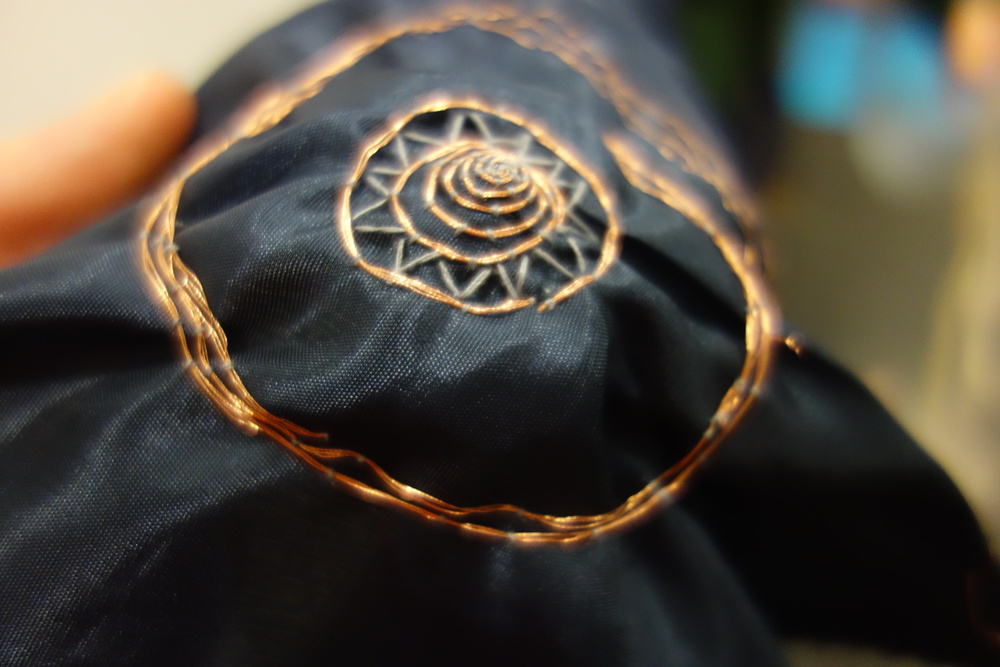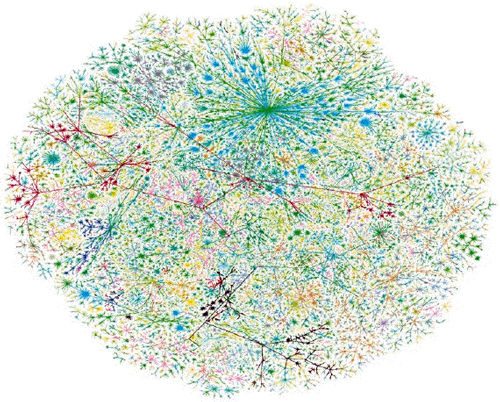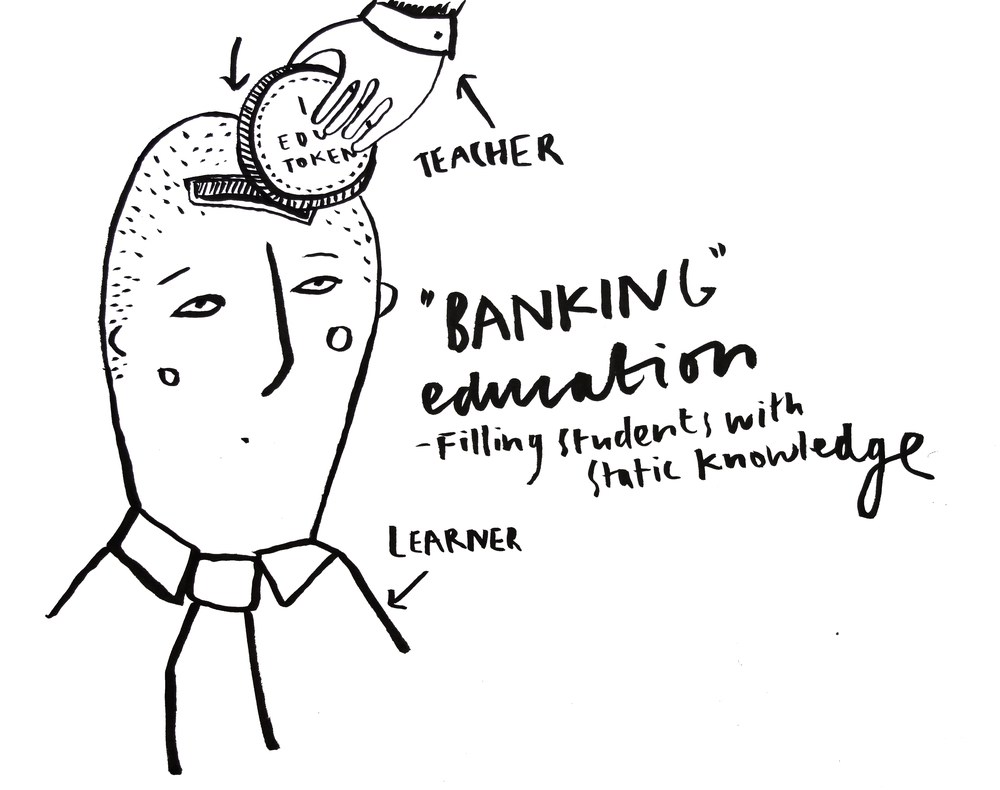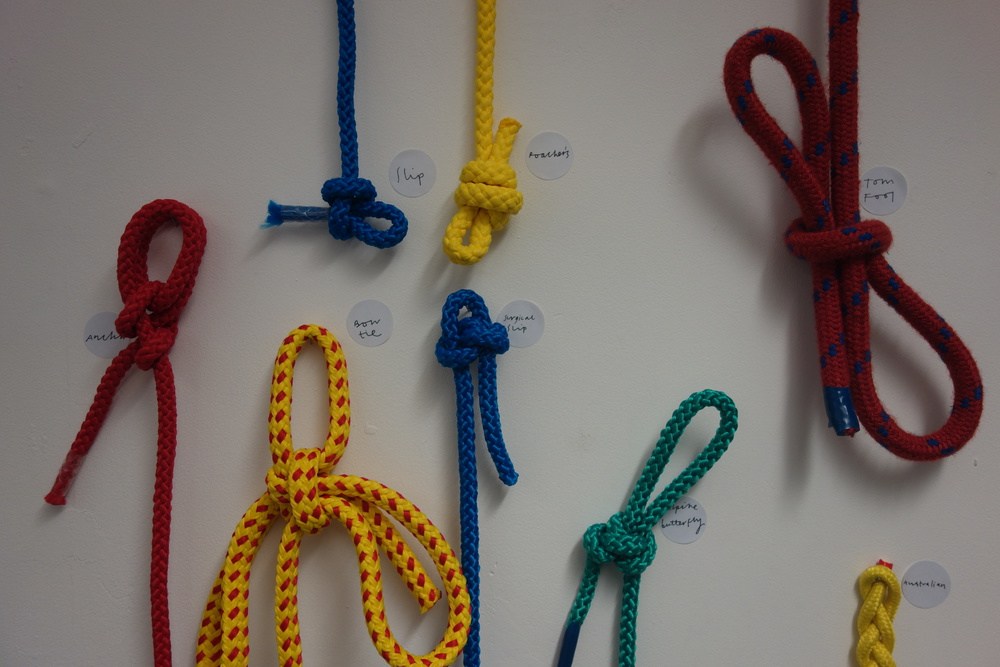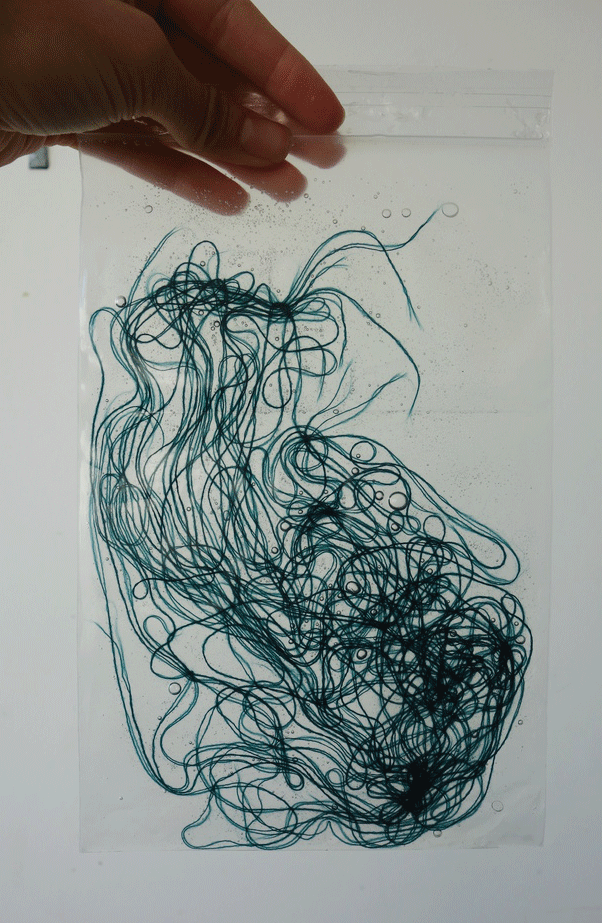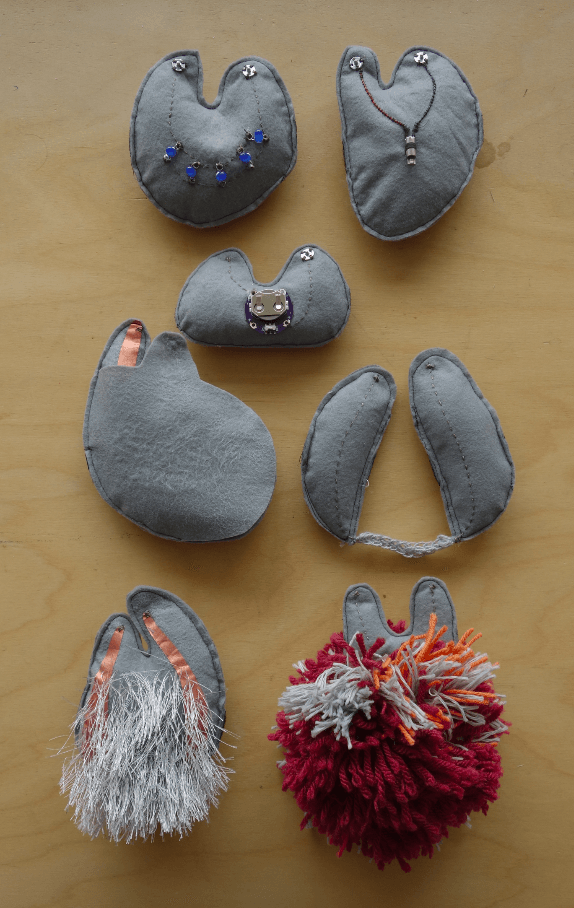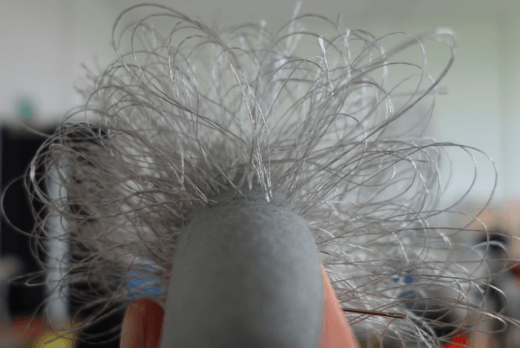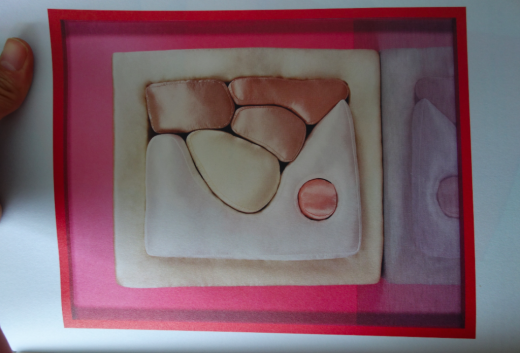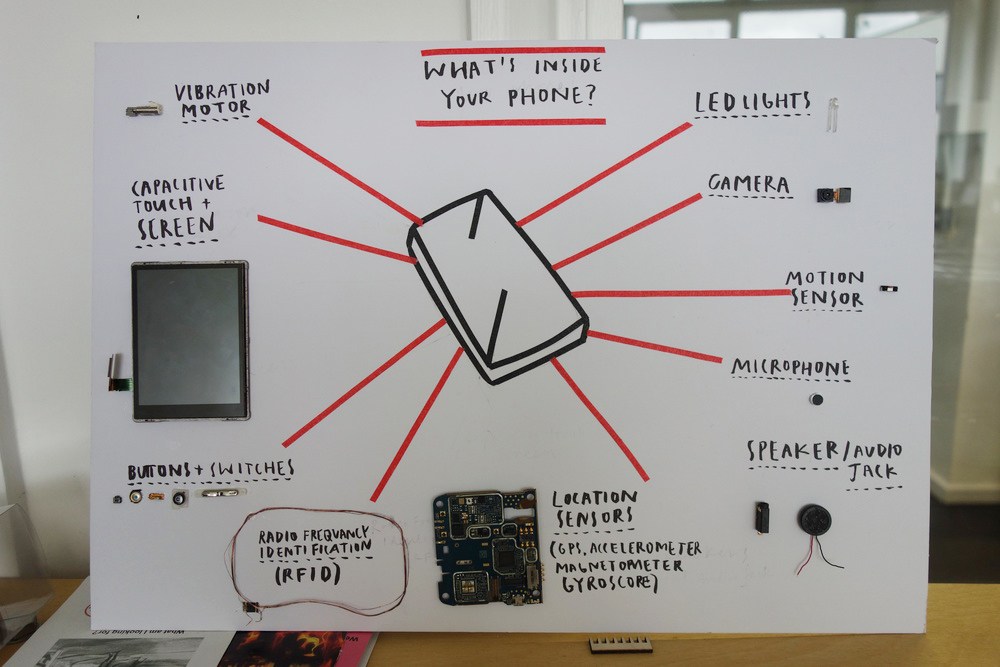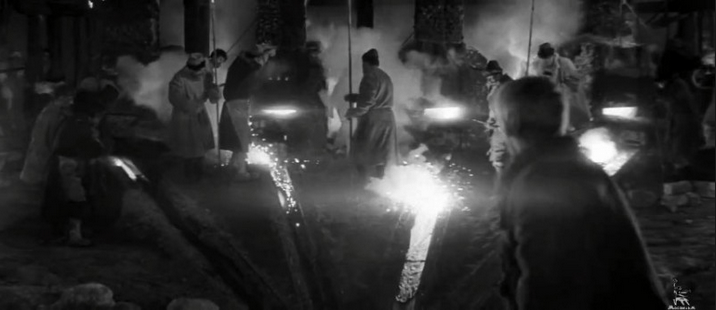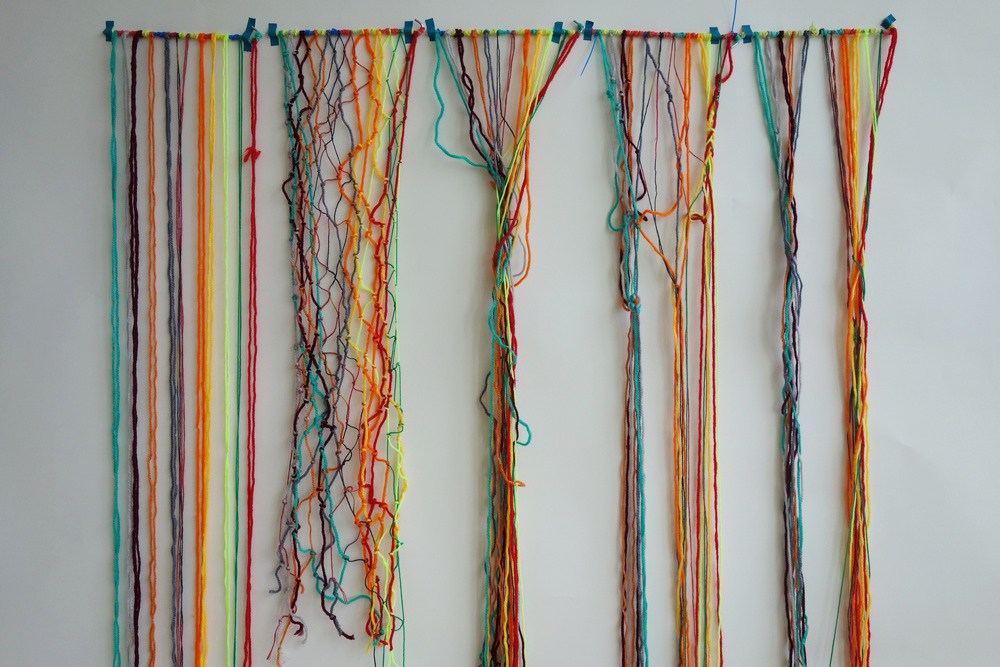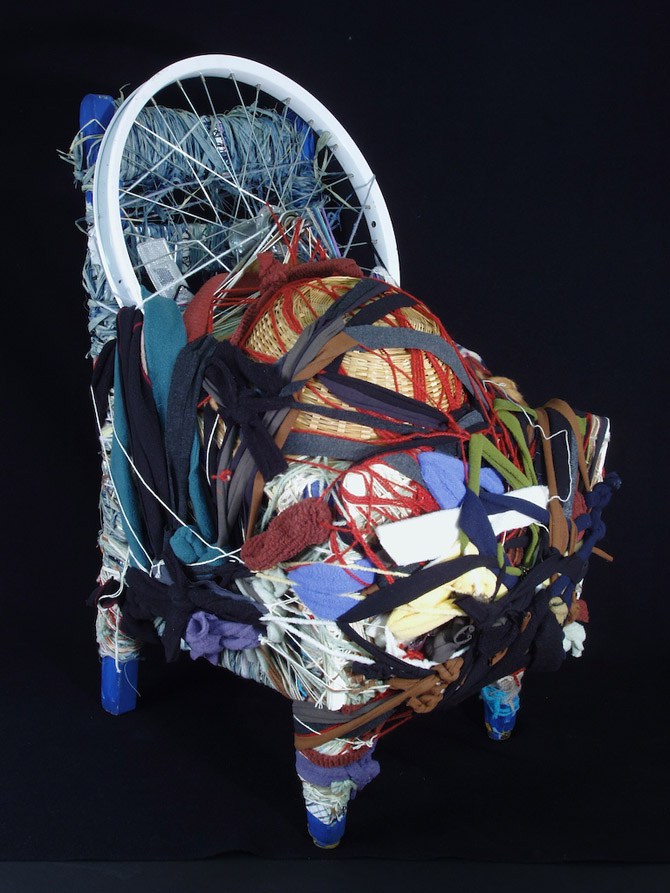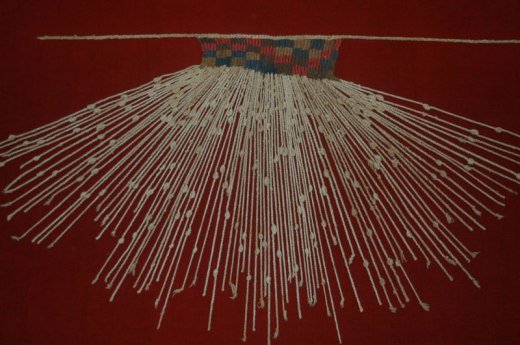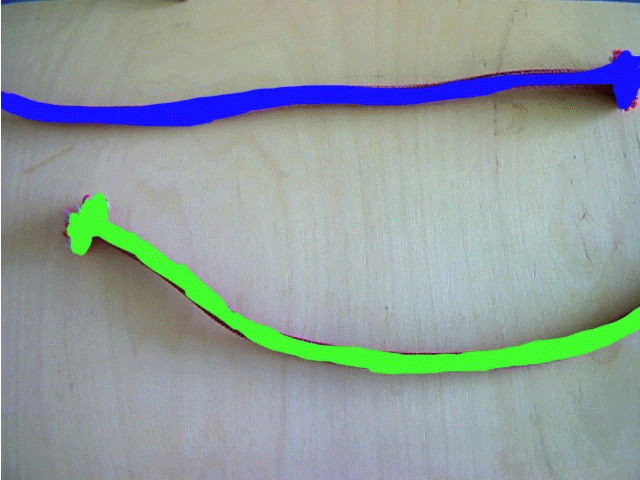-
Darning sensors
We made some samples and tests exploring darned sensors. The work is inspired by the Goldsmiths Fashion and Embodiment workshop
-
Make Shift Do workshop
I first went to Derby Silk Mill Museum this summer when working as an Online Mentor for the Maked Ed community -see video I made about the visit here. The museum invited me back to run an e-textiles workshop, which was part of the Crafts Council Make Shift Do programme. I ran a “Crafting Frequencies”…
-
Next steps
It is hard to go into too much detail here how the learning process I went through on this programme has impacted the way I understand things around my, mainly because it has been so huge. But, now that the MA has finished (sob), I am starting to see how massively my way of approaching…
-
Hubs and Maps
It happened. I am totally exhausted after working for 4 months on this research project, but also very awake. 12 thousands words, some tweaking on inDesign, and a bit of embroidery later and this book is a thing. The abstract: “In this study I explore how design processes can be used to connect students’ and…
-
An illustrated guide to embodied learning
From the review of literature I conducted for my independent research project, here is an illustrated guide to embodied learning: Banking education Central to Paulo Freire’s discourse is his aversion to “banking” education, where learning is a process of transmission, and students are “containers” or “receptacles” to be “filled” with static knowledge by teachers who…
-
Goldsmiths Design Fest
knotting~works Goldsmiths design festival was part of London Design week (which it turns out is London Design -fortnight- not week, but that is great because it means more cool events!). We (MA students) curated and installed a show for the festival, which was a chance to share the work we have been exploring over the…
-
What’s in a knot?
Oh me oh my….I’m still knotting things! So, ok its not the worst thing to be doing (and clearly I am really enjoying the process). This time I wanted to explore the space that effects knotting. Dave and I had some conversations about this when knotting molecules, and I thought I should make some experiments…
-
What are the patches?
I’ve made a set of patches that can be easily attached to the body, and used as props for learning. In this set I have not included a controller for programming, but that would be the next step. They are not complete in themselves -they are part of a larger set of props that work…
-
Using props
“Propping-up” learning with the patches. I ran another workshop to test another (more developed) iteration of the patches, and used them as props. I also used the deconstructed phone map, and we mapped our interests to make the making relevant. These three elements are given “shape” through the learners’ engagement.
-
Sewing patches
Some sewing and making.
-
Shaping amorphous things
I am making patches and although I want them to be “amorphous” they of course will have a shape because they are things, objects, material. So I am exploring ways of shaping that feels without shape. Squishy in their squishiness. Shaping. Elad Lassry, Pillow (2010)
-
Making patches
I’ve tested some patches for making and designing electronics on the body. My concept of “squishy” now focuses on the amorphous. (I have narrowed the concept down to one thread -otherwise there is just too much to explore!). The amorphous of “squishyness” is without a clearly defined shape. And in this case I would like…
-
Making molecular knots
Dave’s research is all about molecular dynamics -how molecule “wiggle and jiggle” as he often says. When I started the knotting project I really wanted to explore knotting on a molecular level. And Dave and I discussed what this would mean. Dave’s group have just developed a virtual reality (VR) molecular simulation that transports you…
-
Mapping sensors
I am making some props for workshops -ways of introducing concepts of sensing into students’ design process. After interviewing students last week, I’ve decided to make 2 things. 1 is a map of the sensors we have in our bog standard phones. The second are some “human breadboards” which are connectable sensors that you can…
-
Thinking through Materialites
Working on the Materialities module has been a fascinating process. For the course we were asked to: …consider the historical conditions, contexts of use, “socio-technical” networks of “entanglement” (Hodder, 2012) or “biography” of a “material” of your own choice. It might be a “material” that you have previously worked with as a designer, or simply…
-
Tension
Experiments in tensions of knot making: “whether the parts add up to a whole or not, what is missing from the additive logic is the tension and friction that make it possible for persons and things to cling. There is no movement. In the assemblage, it is as though the dancers had turned to stone.…
-
Time based knotting
Exploring knot happening over time and in different spaces or contexts. I made a few strands like the above and situated them in various places for 5 days. Outside. In the studio with my beady hands. In the studio with other folks’ beady hands. In my bag. And here they are all in a row.
-
Judith Scott
Judith Scott knotted things. She was an artist from the Oakland based Creative Growth Studio, but she also spent a lot of her life instituted (she was Downs, and also deaf). She didn’t start making work until joining the studio, and was deaf and mute all her life. Knots were one of the few conversations…
-
Quipu
Quipu is a process of mnemonic knot making made by Inca cultures. Inca cultures had no written text or money, and through the process of knot-making they recorded things such as transfer of property, or powers. Strings are tied in certain ways using colour, distance, direction, and knot formation as signifiers. The coded system of…
-
Knottings
Thumb Knot Granny Knot The Bowline Bend The Carrick Bend
